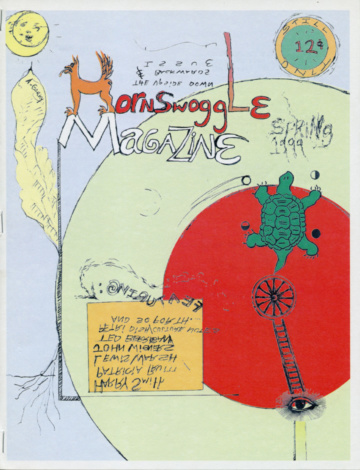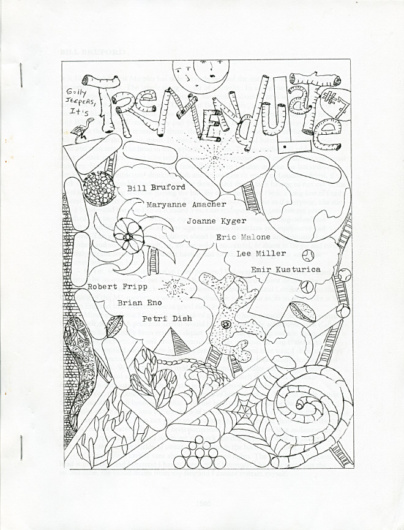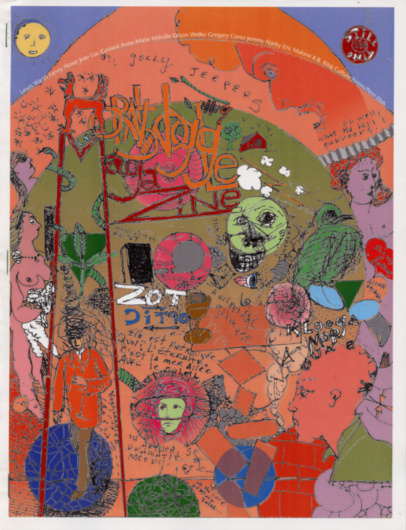Hornswoggle/Boondoggle/Whooskow/Absquatulate/Floccinancininibibipilification/Tremendulate/Scrambola
Nos. 1– (Spring 1999–). Ongoing.
Hornswoggle 1 (Spring 1999).

The standards & conventions of too many magazines are too boring. There may be perverse satisfaction in kvetching about them, but making a magazine of one’s own, in the fugitive tradition, is way more than too much fun. The spirit of Harry Smith initiated Hornswoggle #1. After transcribing a tape of Harry with students at the Naropa institute, & wondering what to do with it, what Robert Fripp refers to as “a point of seeing” presented a view to a photocopied magazine of circa 25 pages, making use of odd-ball, archival, and Other material. Unbeknownst to them, The Weatherhead Center for International Affairs at Harvard, founded by Henry Kissinger, supplied the copy machines and postal meter for the first 5 issues. Thereafter, access to another copy machine was secured, and readers began sending in books of stamps. Production of Hornswoggle #1 began on a Friday afternoon, and as it mailed out the following Monday, issues 2 & 3 were all typed up & ready to go. The first 4 issues were produced on a manual typewriter. Access to a perfectly calibrated color printer made for the striking covers of the first ten issues, which were drawn by hand, scanned, and colored in Photoshop. The magazine went out via assorted mailing lists, and stacks were also left in CD/record shops, cafes, and bookstores around Boston, Brookline & Cambridge (After poet & publisher Lewis Warsh remarked that these dispersions of the magazine were “a waste,” they also began appearing in laundromats, doctor and dentist waiting rooms, and on subway car seats). Initially, a run of ten or twelve issues over a year seemed plausible, but the magazine continued onward with a change of title every ten issues, as it moved from an urban to a rural location. Highlights include Billie Whitelaw’s recollections of working with Samuel Beckett; the imaginary Jean Luc Godard interview that many certified Godard nuts found entirely convincing; the Jack Kerouac poems that fooled Clark Coolodge, who wrote asking how I had such access to the Sampas estate; David Bohm interviewed by Ace Frehley; the interview with attorney Bob Doyle on his Strangeloveian experiences in naval intelligence, working on the campaigns of Bobby Kennedy, Mo Udall, Jimmy Carter, & further escapades in Democratic party politics; the reprinting from obscurity of Philip Whalen’s “The Education Continues Along” in Phil’s calligraphic handwriting; the imaginary dialogues between Denis Diderot & Oscar Wilde; the complete Ted Berrigan Art News reviews; imaginary Harry Smith interviews that temporarily fooled Smith pal & aficionado Harvey Bialy; John Kenneth Galbraith interviewed by Bernadette Mayer; Steve Lacy interviewed by Lee & Maria Friedlander; Wim Wenders interviewed about his collaboration with Robert Kramer on The State of Things; Sunny Murray interviewed by Cher; Chantal Akerman interviewed by Cloris Leachman…
CHEERS & FUTURITY
— Rufus T. Firefly

Tremendulate 7 (n.d.)

Hornswoggle 9 (n.d.)
